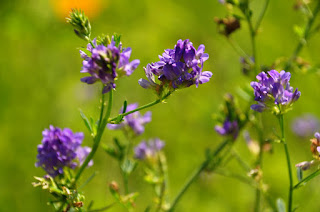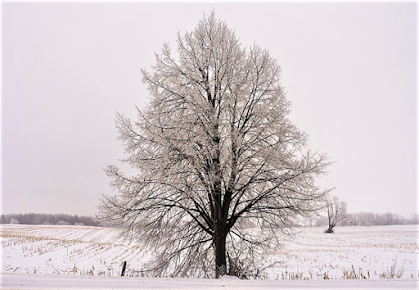Filter Strips – An effective and affordable conservation practice
This is not the first time we have written about filter strips and the amazing things they do to protect the water resources we all depend on. We have even held educational workshops and informational booths. We just can’t seem to stop boasting about all their environmental benefits, and it is for a good reason – they are an effective and affordable conservation practice.
Filter strips are strips of permanently established
herbaceous vegetation between a crop field and a waterbody, such as a stream,
lake, or river. They “filter” water as it flows across them from the adjacent
crop before entering the waterbody. They can be many different widths and
planted to a wide variety of plants (grass, forbs, legumes). Each filter strip
design depends on the site conditions, what pollutants it is filtering, and any
additional goals of the landowner.
The primary purpose of filter strips is to reduce sediment and other contaminants such as nutrients, pesticides, and manure in water runoff. They have many other benefits as well including:
- Filter strips decrease erosion and increase root mass which increases or maintains soil organic matter. Their root penetration and organic matter will reduce soil compaction.
- The vegetation in filter strips remove carbon dioxide from the air and stores it in the form of carbon in the plants and soil.
- The vegetation in filter strips provides more
food, cover, and shelter for wildlife and beneficial insects.
Taking any amount of cropland out of production is a serious
thing to consider. If you own or farm cropland adjacent to water, think about
what it looks like. Is the topsoil eroding into the water? Is the yield less
than compared to the rest of the field? Are you applying nutrients that are
just running off into the water? Would the long-term soil and water benefits
outweigh losing 50 feet of cropland? Would you consider planting a filter strip
if you were receiving annual financial incentives to do so?
The Conservation Reserve Enhancement Program (CREP) is open for re-enrollment in select watersheds. In Shiawassee County, the Shiawassee River and Flint River Watersheds are eligible for CREP. The program offers increased financial incentives and technical assistance for landowners to implement conservation practices. Filter strips, riparian buffers, grassland plantings, and sediment control basins are among the eligible practices.
CREP is part of the Conservation Reserve Program (CRP) and is administered by the Farm Service Agency, meaning they hold the contract with the landowner and make the payments. Landowners can contact the Farm Service Agency at (989) 723-8263 ext 2 for more information about CREP.
The Conservation District office works with landowners and producers to develop free and confidential conservation plans. Those plans can then be used to apply for financial assistance through CREP and other Farm Bill conservation programs. Contact the Shiawassee Conservation District to learn more about conservation planning at (989) 723-8263 ext. 3.
.jpg)
.JPG)



Comments
Post a Comment